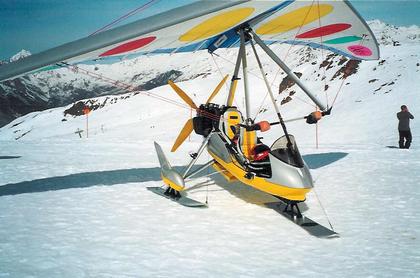

 |
 |
|
|||||||
| Home | Forums | Gallery | Webcams | Blogs | YouTube Channel | Classifieds | Register | FAQ | Members List | Donate | Today's Posts | Search |
 |
|
|
Thread Tools | Display Modes |
|
|
|
|
#1 |
|
Senior Member
Join Date: Jul 2005
Location: Thornton's Ferry
Posts: 1,309
Thanks: 67
Thanked 172 Times in 128 Posts
|
FLL
FWIW - An 'airboat' is like a john boat with an airplane propeller pushing it. |
|
|

|
|
|
#2 |
|
Senior Member
Join Date: Jan 2005
Posts: 3,540
Thanks: 222
Thanked 828 Times in 499 Posts
|
|
|
|

|
|
|
#3 |
|
Member
Join Date: Feb 2006
Location: Cow Island / Holderness, NH
Posts: 46
Thanks: 4
Thanked 19 Times in 8 Posts
|
An amphibious Argo or Maxx is a good solution most of the time. Their Achilles heel is when there is snow and crust on top of snow and ice. When the machine breaks through this type of strata it is held up by the crust and snow and the plastic tracks on ice arenít much good, youíre stuck. Ironic that they can handle most anything other than that.
|
|
|

|
|
|
#4 |
|
Junior Member
Join Date: Aug 2014
Posts: 4
Thanks: 0
Thanked 3 Times in 2 Posts
|
Why not go over the lake rather than ON the lake. You dont need a license for an ultralight and it's actually quite fun and can be landed on any surface, ice, water, or land if you get the proper body similar to that of a hovercraft. The difference is that a hovercraft's body is vulnerable to being punctured by ice chunks. You wont have this issue with a similar body with an ultralight. My grandfather is an ex-pilot (he's now 78) and he still flies ultralights and has all sorts of different landing methods depending upon the body he uses. An ultralight can land and take off in 80 ft, but I've seen him do it in 40 right on my front lawn.
Besides, wouldnt it be a cool experience?  It might not be an option for you, but it's certainly an "option" hehe. http://backcountryaerosports.com/faqs.ydev <--- All of the most common ultralight questions/answers. Take particular notice to TEMPERATURE. The colder it is, the more stable it is for flying which means it's great to fly ultralight in colder seasons when boat is not an option  If it were me, I'd have 4 modes of transportation. The legs on this trike are interchangable. It can use wheels, floats, hover floats, or ski's. Hoverfloats are the "all-terrain" method for trikes but they are significantly heavier. You can land them on any surface as seen below: If it were me, I'd have 4 modes of transportation. The legs on this trike are interchangable. It can use wheels, floats, hover floats, or ski's. Hoverfloats are the "all-terrain" method for trikes but they are significantly heavier. You can land them on any surface as seen below: If if you are ok with not having the safety of a glider, you could get one of these badboys: https://www.youtube.com/watch?v=6VaG0LQBcgY <---- BTW, the "rotor" is not even connected to the engine. It's called a gyrocopter. The Rotor is spinning on it's own. It will even spin if you kill the engine! This guy says it best here: https://www.youtube.com/watch?v=p8IB-5PbL9U "Most aircraft below 800 feet, if the engine dies, you are left with no time to recover. But for us, we dont care if the engine dies!" Then, he kills the engine LMAO". It's a cool vid to watch on gyrocopters which can land and takeoff in even shorter spaces than trykes. 1. 4 Wheeler for when there is no/little/packed snow on the ice (usually early winter), safe enough for snowmobile, but terrible on the tracks (Another option would be an enclosed side-by-side ATV, its a wheeler with a cab basically) 2. Snowmobile for winter or if snow is to deep for the wheeler 3. Boat (this goes without saying, its the best option when its open water season) 4. Ultralight, good for the tweener seasons (Fall/Spring). Also a cool way to check things out from above no matter what the season and believe it or not, they are actually safer than sleds/atv's. They do NOT need a motor to "fly". You can kill the motor and still fly for very long periods of time depending upon updrafts and what not. Its no different than hang gliding. Just try not to land in a tree  So like the seasons, Mobility should have 4 methods when you're living "off the grid". I've lived in Alaska and this mentality of 4 types of transportation comes from those experiences.  <-- doesnt that look cool? Who needs a sled when you have one of these beasts <-- doesnt that look cool? Who needs a sled when you have one of these beasts 
Last edited by oceanadventura; 02-09-2015 at 05:55 PM. |
|
|

|
 |
| Bookmarks |
|
|